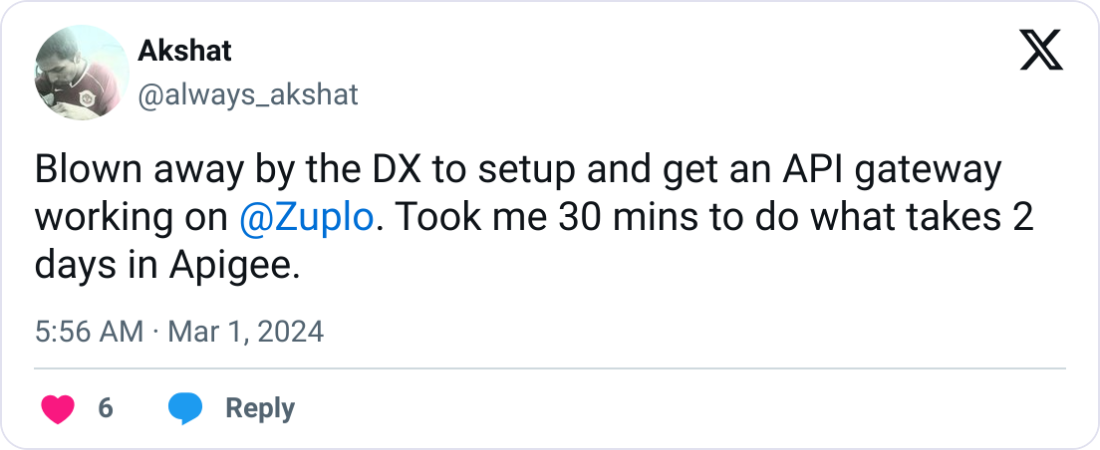Tired of integration nightmares when your APIs refuse to play nice? Contract testing for APIs is the secret weapon smart developers use to ensure seamless communication between systems without the headache of complex test environments. Unlike traditional testing that tries to verify everything at once, contract testing zeroes in on what truly matters: guaranteeing your services can talk to each other without unexpected failures.
Contract testing creates a "handshake agreement" between API providers and consumers, defining exactly what data gets sent and what comes back. This targeted approach lets you test components in isolation while still verifying they'll work together perfectly in production.
Let's explore how this testing strategy can transform your development process and eliminate those dreaded 3 AM production incidents.
- Why Traditional Integration Testing Falls Short
- Where Contract Testing Fits in Your Testing Strategy
- The ROI of Contract Testing: Numbers That Convince Decision Makers
- Contract Testing Fundamentals: Consumer vs. Provider Approaches
- Implementing Contract Tests: A Practical Guide
- Avoiding Common Pitfalls: Patterns and Anti-Patterns
- Choosing the Right Tools for Your Stack
- Implementing Tests for Consumers and Providers
- Supercharging Your CI/CD Pipeline with Contract Tests
- Overcoming Multi-Team Implementation Challenges
- Advanced Techniques for Complex Systems
- Getting Started Today
Why Traditional Integration Testing Falls Short#
Setting up environments with multiple interconnected services causes developer torture that wastes precious time and sanity. Traditional integration testing crumbles under the weight of microservices architecture for several critical reasons:
The Troubleshooting Maze#
When integration tests fail, you'll spend countless hours chasing down whether the actual code is broken or if it's just another environment hiccup. As your service count grows, integration testing complexity doesn't just increase—it explodes exponentially. What worked for three services becomes a nightmare at thirty.
Breaking the Deployment Chain#
These problems become deal-breakers when teams need to deploy frequently and independently, making traditional integration testing inadequate for modern development workflows. Every team ends up waiting for others, creating bottlenecks that slow innovation to a crawl.
Environment Instability#
Test environments rarely match production perfectly. They have different configurations, data states, and infrastructure. This misalignment creates phantom issues that disappear in production or, worse, misses critical bugs that only surface after deployment.
Where Contract Testing Fits in Your Testing Strategy#

In the testing pyramid, unit tests form the foundation (fast but limited), integration tests sit in the middle, and end-to-end tests perch at the top (comprehensive but painfully slow).
Contract testing for APIs slides perfectly between unit and integration tests. It provides significantly more confidence than unit testing alone by verifying your services actually work together, but without the headaches and sluggish feedback cycles of end-to-end testing.
With contract testing in your arsenal, you can drastically reduce those brittle end-to-end tests while still sleeping soundly knowing your services won't experience communication breakdowns. This approach delivers faster feedback and supports independent development—absolute necessities in modern microservices architectures where managing multiple API development environments can be challenging.
The ROI of Contract Testing: Numbers That Convince Decision Makers#
Every testing strategy needs a solid business case behind it. Contract testing delivers measurable value that resonates with both technical and business stakeholders looking to build a successful business model for APIs. Let's examine the concrete benefits that make contract testing worth the investment.
Cut Costs by Catching Bugs Early#
Finding integration problems late in development leads to financial suicide. Traditional testing approaches often miss API mismatches until systems are fully deployed, precisely when fixes become ridiculously expensive.
Bugs found in production cost up to 100 times more to fix than those caught during development. Contract testing catches these integration train wrecks early, slashing costs by identifying problems before they ever reach customers.
Speed Up Development Cycles#
In competitive markets, being slow means being irrelevant. Contract testing turbocharges your development in multiple ways:
- Independent Development - Teams can build without waiting for other services to be completed. This parallel workflow dramatically compresses project timelines and eliminates costly blocking dependencies.
- Early Issue Detection - Problems surface early, not during painful debugging sessions. When mismatches between service expectations are caught during development, they're fixed in minutes rather than causing multi-hour war rooms.
- Reliable Releases - Fewer integration-related deployment disasters mean more predictable release schedules. Teams spend less time fixing broken builds and more time delivering valuable features.
For teams serious about continuous delivery, contract testing eliminates the integration risks that typically brake release cycles, letting you ship more frequently and reliably.
Improve Cross-Team Collaboration#
Contract testing naturally creates clearer communication channels between teams. By explicitly defining how services should interact, teams develop a shared understanding that transcends organizational boundaries.
- Clear Service Boundaries - Teams must explicitly define and agree on how their services communicate, eliminating ambiguity.
- Reduced Finger-Pointing - When issues arise, contracts provide objective evidence of what went wrong and who needs to address it.
- Streamlined Onboarding - New team members can quickly understand how services interact by reviewing the contracts, accelerating their productivity.
This improved collaboration extends beyond technical teams to include product owners and stakeholders, who gain better visibility into system dependencies and integration risks.

Over 10,000 developers trust Zuplo to secure, document, and monetize their APIs
Learn MoreContract Testing Fundamentals: Consumer vs. Provider Approaches#
Two main approaches dominate the contract testing world, each with distinct advantages and implications for API governance practices:
Consumer-Driven Contracts#
The API consumer calls the shots here, defining exactly what they expect from a provider—the requests they'll make and the responses they need. The provider then verifies they can meet these expectations. This approach shines in microservices environments where teams own both sides of the integration.
Provider-Driven Contracts#
With this approach, the provider defines what their API offers, and consumers verify they can work with it. This strategy works best when APIs are built for public consumption or when one provider serves many consumers. It’s particularly valuable when an organization wants to standardize interaction patterns or enforce specific architectural constraints.
A solid API contract provides specific details about endpoints, HTTP methods, request and response formats, authentication requirements, error handling, and includes clear examples. These components create a shared understanding between API producers and consumers, eliminating assumptions that lead to integration headaches.
Implementing Contract Tests: A Practical Guide#
Once you understand the typical workflow, contract testing becomes surprisingly straightforward:
Creating and Managing Contracts#
First, define the contract representing the shared understanding between provider and consumer. Most modern tools let you define contracts through code, specifying expected requests and responses. These contracts should be version-controlled alongside your application code, giving you history and traceability. Adopting a GitOps approach can streamline this process.
The Verification Process#
With contracts in place, both sides verify against them:
- Consumers run tests against a mock server implementing the contract
- Providers test their actual implementation against the contract
This two-sided verification creates a tight feedback loop that catches issues before they become production problems.
Handling Contract Changes#
Your contracts will inevitably change as APIs evolve. Handle these changes gracefully by:
- Implementing semantic versioning for contracts
- Creating transition periods with multiple supported versions
- Using a contract broker to share and manage contracts between teams
The key is having a clear process for proposing, reviewing, and implementing contract changes that involves all stakeholders to prevent issues like HTTP 431 errors.
Avoiding Common Pitfalls: Patterns and Anti-Patterns#
Want to nail contract testing? Learn from others' experiences with these battle-tested patterns and anti-patterns.
Effective Patterns#
- Consumer-Driven Approach - Let real-world usage guide your API design by having consumers define what they need, ensuring your API actually solves real problems.
- Centralized Contract Repository - Maintain a single source of truth for all contracts to prevent confusion and versioning conflicts between teams.
- Shift-Left Testing Philosophy - Catch issues when they're cheapest to fix by validating contracts early, ideally during design discussions before coding begins.
- Versioned Contracts - Implement proper versioning for contracts to track changes, understand impact, and enable rollbacks when needed.
- Contract Coverage Monitoring - Track which endpoints are covered by contract tests to identify blind spots and ensure comprehensive testing.
- Automated Verification - Integrate contract testing into CI/CD pipelines to get immediate feedback when changes break existing contracts.
- Incremental Adoption - Start with your most critical APIs rather than trying to implement contract testing everywhere at once.
- Documentation Generation - Use contracts as the source of truth for automatically generating API documentation to ensure docs stay current.
- Backward Compatibility Rules - Establish clear guidelines about what changes require version increments and which are allowed within versions.
- Contract Review Process - Implement a lightweight review process for contract changes to catch potential issues before implementation.
Anti-Patterns to Avoid#
- Overreliance on E2E Testing - Continuing to maintain extensive end-to-end tests defeats the purpose of faster, more focused contract testing.
- Ambiguous Interface Definitions - Failing to clearly define service responsibilities and interfaces leads to misunderstandings that contract testing can't resolve.
- Retrofitting Contracts - Adding contract tests as an afterthought rather than designing contracts first creates misalignment between expectations and implementation.
- Contract Neglect - Not updating contracts when API changes occur renders testing ineffective and creates false confidence.
- Siloed Contracts - Keeping contracts in isolation without sharing between teams defeats the purpose of creating shared understanding.
- Excessive Mocking - Creating overly complex mock responses that don't reflect reality leads to passing tests but failing integrations.
- Ignoring Performance Aspects - Focusing only on functional correctness while neglecting response time expectations can still result in unusable integrations.
- Contract Bloat - Including every possible edge case in contracts makes them difficult to maintain and understand.
- Missing Error Scenarios - Only testing the happy path leaves consumers unprepared for handling failure modes, like handling API rate limits.
- Manual Contract Updates - Manually updating contracts without automation leads to drift between actual behavior and contract definitions.
- Skipping Provider Verification - Only testing the consumer side without verifying the provider actually meets the contract.
- Complex Testing Frameworks - Creating over-engineered testing frameworks that few developers understand or maintain effectively.
Choosing the Right Tools for Your Stack#

The contract testing landscape offers diverse tools, each with unique strengths and specializations. Selecting the right solution directly impacts your implementation success, team adoption, and long-term maintenance.
Pact#
The popular choice for polyglot environments, Pact supports JavaScript, Ruby, Java, .NET, Go, Python, and PHP. Excels at consumer-driven contracts and integrates seamlessly with CI/CD pipelines.
Spring Cloud Contract#
If your world revolves around Spring and Java, Spring Cloud Contract integrates perfectly with the Spring ecosystem while focusing primarily on JVM environments.
Zuplo#
While not built specifically for contract testing, Zuplo is an OpenAPI-native API gateway that allows you to enable Request validation and Response validation based on the schema defined in your OpenAPI specification. You can choose to log or throw errors if the data entering or leaving your API does not conform to your contract.
Choose your tool based on:
- Technology stack compatibility
- Team expertise with specific tools
- Whether you prefer consumer-driven or provider-driven contracts
- Maintenance requirements and organizational structure
Implementing Tests for Consumers and Providers#
For consumers, contract tests capture what you expect from a provider's API:
// Define the expected interaction
await provider.addInteraction({
state: "user with id 1 exists",
uponReceiving: "a request for user data",
withRequest: {
method: "GET",
path: "/users/1",
headers: {
Accept: "application/json",
},
},
willRespondWith: {
status: 200,
headers: {
"Content-Type": "application/json",
},
body: {
id: 1,
name: "John Doe",
email: "john@example.com",
},
},
});For providers, you verify that your implementation satisfies all consumer expectations:
@SpringBootTest(webEnvironment = SpringBootTest.WebEnvironment.MOCK)
@AutoConfigureMockMvc
public class BaseContractTest {
@Autowired
private MockMvc mockMvc;
@BeforeEach
public void setup() {
RestAssuredMockMvc.mockMvc(mockMvc);
}
}
Supercharging Your CI/CD Pipeline with Contract Tests#
Contract testing delivers maximum value when integrated into your CI/CD pipeline:
name: API Contract Testing
on:
push:
branches: [main]
pull_request:
branches: [main]
jobs:
consumer-contract-test:
runs-on: ubuntu-latest
steps:
- uses: actions/checkout@v3
- name: Set up Node.js
uses: actions/setup-node@v3
with:
node-version: 16
- name: Install dependencies
run: npm ci
- name: Run consumer contract tests
run: npm run test:consumer-contracts
- name: Publish Pact contracts
if: github.event_name == 'push' && github.ref == 'refs/heads/main'
run: npm run publish:pacts
env:
PACT_BROKER_URL: ${{ secrets.PACT_BROKER_URL }}
PACT_BROKER_TOKEN: ${{ secrets.PACT_BROKER_TOKEN }}This workflow runs consumer tests on every PR and push, but only publishes contracts when merging to main. For best results:
- Run contract tests on feature branches to catch issues early
- Block deployments if contract verification fails
- Create notification systems for contract failures
- Set up different contract environments (development, staging, production)
Overcoming Multi-Team Implementation Challenges#
Success demands addressing both the technological and the cultural aspects of change management. Let's explore proven strategies for overcoming the most common coordination hurdles.
Managing Contracts Across Teams#
- Deploy a central contract repository to create a single source of truth where all teams can access, update, and verify contracts throughout the development lifecycle. Additionally, leveraging hosted API gateway benefits can further streamline multi-team collaboration.
- Establish clear contract ownership to eliminate confusion about which team is responsible for maintaining specific contracts and handling issues that arise.
- Implement organization-wide standards for contract format, naming conventions, and testing approaches to ensure consistency across different teams and services.
- Schedule regular cross-team review sessions to address contract issues, share best practices, and ensure alignment between providers and consumers.
- Create a dedicated integration team to oversee contract governance, provide guidance, and mediate disputes between teams when integration issues arise.
Evolving Contracts Safely#
- Follow semantic versioning principles for contract changes to clearly communicate impact and potential breakage to consuming teams.
- Establish explicit backward compatibility policies that define how long older versions will be supported after introducing new contract versions.
- Provide comprehensive documentation for breaking changes with migration guides that help consuming teams adapt to new contract versions smoothly.
- Implement proactive notification systems to alert consumers about upcoming contract changes with sufficient lead time for adaptation.
- Create transitional periods where both old and new contract versions remain supported, allowing consumers to migrate at their own pace.
- Automate compatibility checking to verify that contract changes don't break existing consumers before those changes are merged.
- Implement feature toggles for gradual rollouts of new contract versions while maintaining support for legacy implementations.
Advanced Techniques for Complex Systems#
As your system complexity grows, these advanced techniques become essential for maintaining robust integration testing. Let's explore how to adapt contract testing for today's most complex architectural patterns.
Contract Testing Asynchronous APIs#
Traditional contract testing was designed for synchronous request-response patterns, but asynchronous APIs require different approaches:
- Select tools with explicit asynchronous support to properly model and test message-based interactions without forcing them into a synchronous paradigm.
- Verify both message format and content against contract specifications to ensure consistent data structures across producer and consumer systems.
- Implement separate contracts for producers and consumers to clearly define responsibilities on both sides of the asynchronous boundary.
- Test message ordering and timing constraints when sequence or delivery guarantees are part of your contract's implicit expectations.
- Simulate various delivery scenarios including delayed messages, duplicate messages, and out-of-order delivery to verify robust handling.
Testing Event-Driven Architecture#
Event-driven systems introduce additional complexities for contract testing:
- Define clear event schemas for all message types to create unambiguous expectations for both publishers and subscribers.
- Verify message routing behavior to ensure events reach their intended destinations across complex broker topologies.
- Test producer compliance by confirming they emit correctly structured events with all required attributes and payloads.
- Validate consumer behavior by verifying subscribers can properly process events and handle various event scenarios.
- Implement versioning strategies for events to manage backward and forward compatibility as your event schema evolves.
- Test event chains and cascades when one event triggers the production of subsequent events in a workflow sequence.
- Simulate failure modes like dropped events, duplicate events, and broker outages to verify system resilience.
Getting Started Today#
Contract testing transforms API reliability by slashing integration issues, speeding up development, and boosting team collaboration. Start with one critical API interaction using tools that match your stack, then gradually expand as you prove value. This approach won't replace all your testing, but it will dramatically reduce those midnight production emergencies that plague microservice architectures.
Ready to eliminate API integration headaches? Zuplo's platform makes implementing contract testing straightforward while providing powerful performance optimization and security features. Our developer-friendly interface delivers immediate benefits without complex setup. Sign up for a free Zuplo account today and join organizations that deploy with confidence.